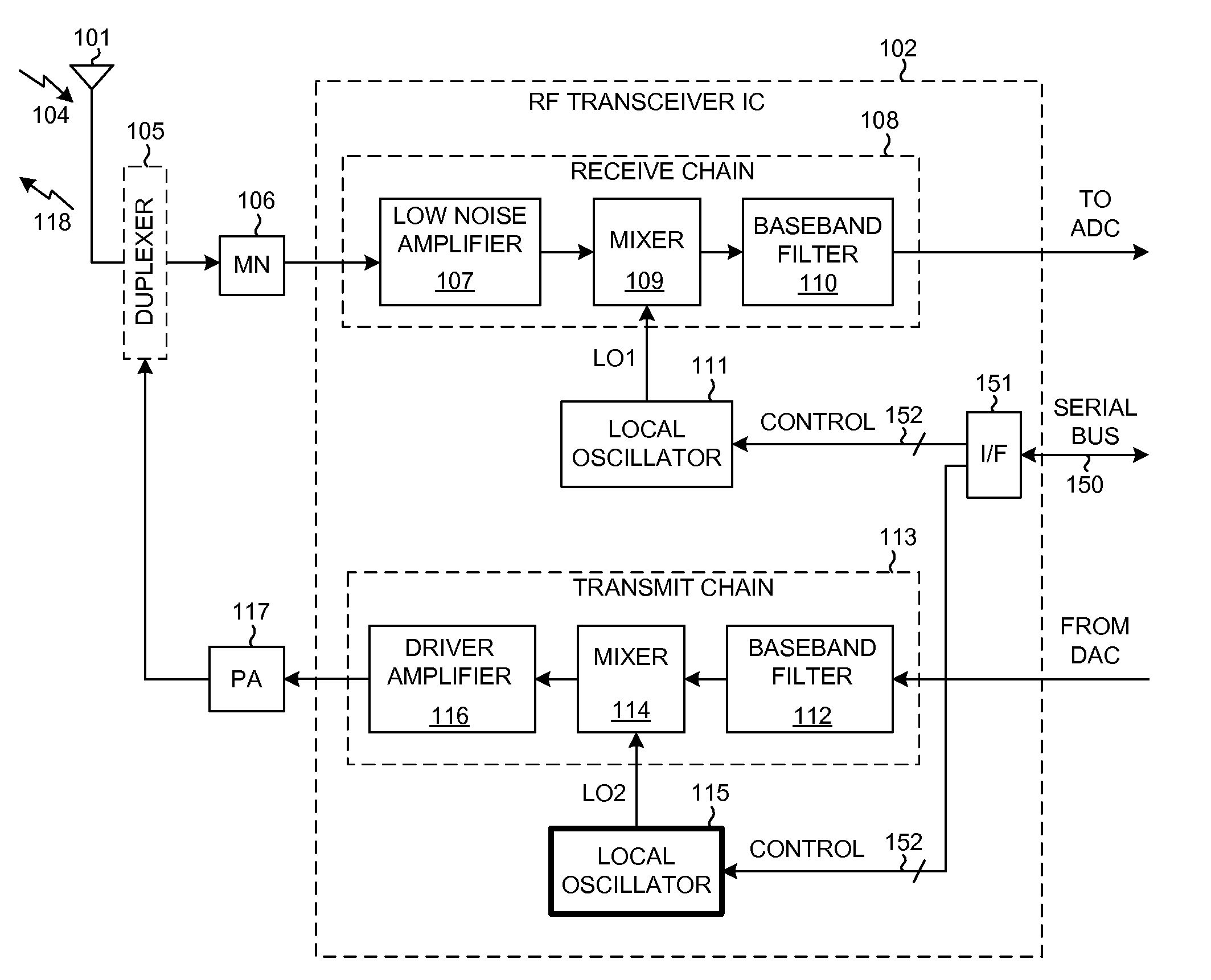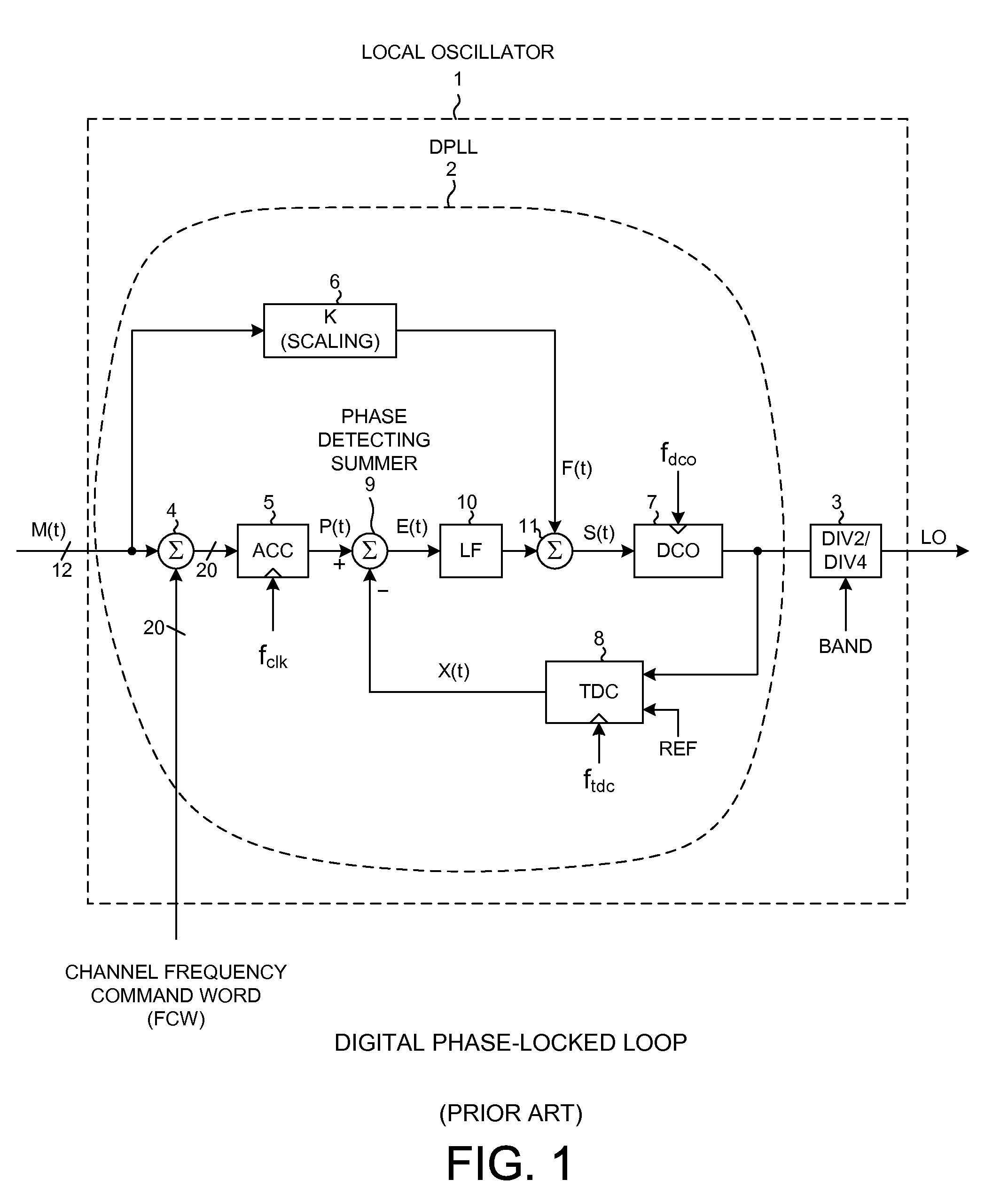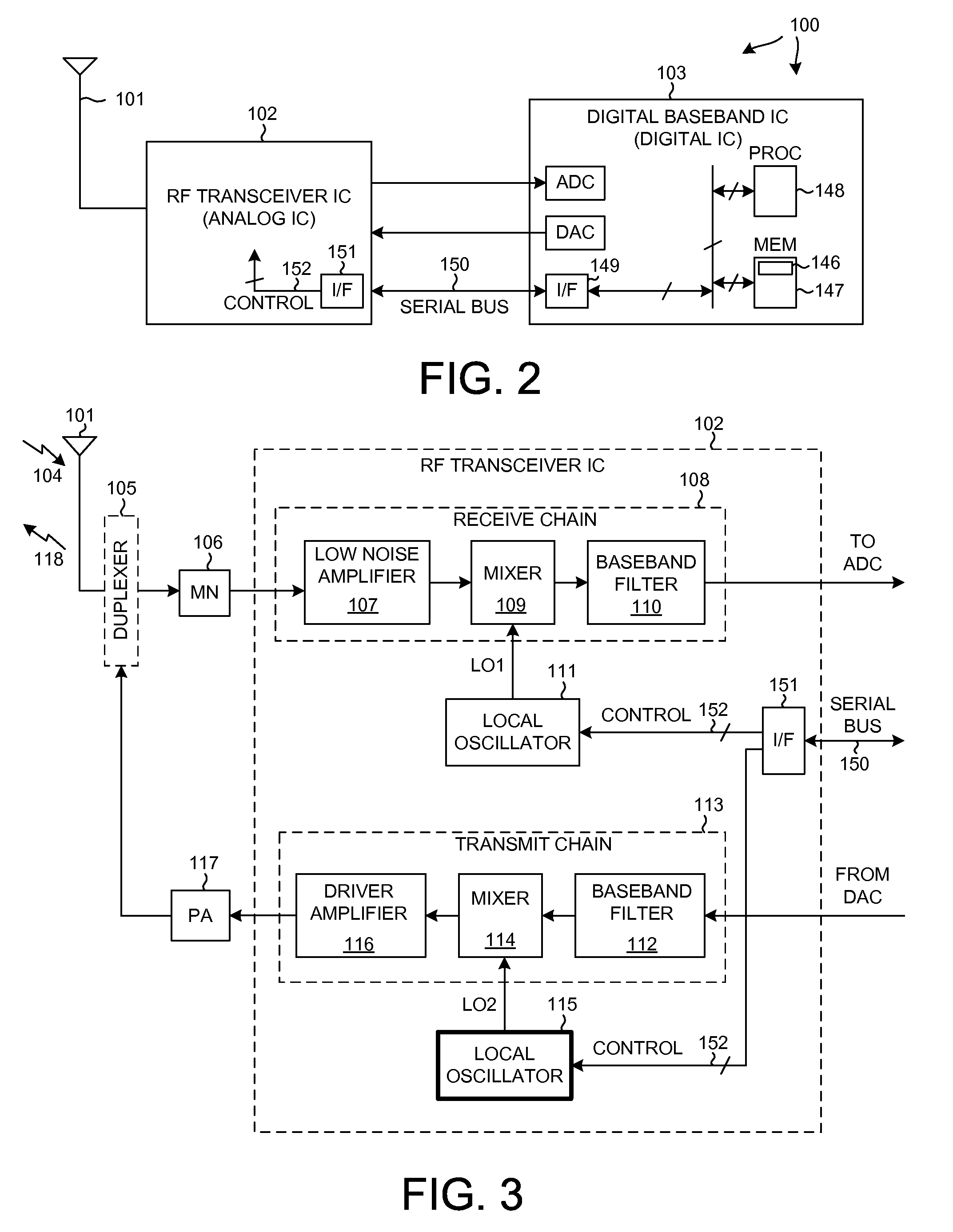Multi-rate digital phase locked loop
a phase lock and multi-rate technology, applied in the field of digital phase lock loops, can solve the problems of dpll to consume an undesirable amount of power, quantization giving rise to quantization noise, and spectral purity of lo signal compromised to an unacceptable degree, so as to reduce the power consumption of dpll, reduce digital images, and improve sample rate
- Summary
- Abstract
- Description
- Claims
- Application Information
AI Technical Summary
Benefits of technology
Problems solved by technology
Method used
Image
Examples
Embodiment Construction
[0026]FIG. 2 is a very simplified high level block diagram of a mobile communication device 100 such as a cellular telephone. Device 100 includes (among other parts not illustrated) an antenna 101 usable for receiving and transmitting cellular telephone communications, an RF transceiver integrated circuit 102, and a digital baseband integrated circuit 103.
[0027]FIG. 3 is a more detailed diagram of the RF transceiver integrated circuit 102 of FIG. 1. In one very simplified explanation of the operation of the cellular telephone, if the cellular telephone is being used to receive audio information as part of a cellular telephone conversation, then an incoming transmission 104 is received on antenna 101. The signal passes through duplexer 105 and a matching network 106 and is amplified by a Low Noise Amplifier (LNA) 107 of a receive chain 108. After being downconverted in frequency by a mixer 109 and after being filtered by baseband filter 110, the information is communicated to the dig...
PUM
 Login to View More
Login to View More Abstract
Description
Claims
Application Information
 Login to View More
Login to View More - R&D
- Intellectual Property
- Life Sciences
- Materials
- Tech Scout
- Unparalleled Data Quality
- Higher Quality Content
- 60% Fewer Hallucinations
Browse by: Latest US Patents, China's latest patents, Technical Efficacy Thesaurus, Application Domain, Technology Topic, Popular Technical Reports.
© 2025 PatSnap. All rights reserved.Legal|Privacy policy|Modern Slavery Act Transparency Statement|Sitemap|About US| Contact US: help@patsnap.com



